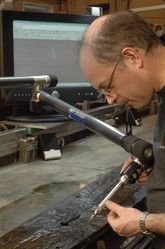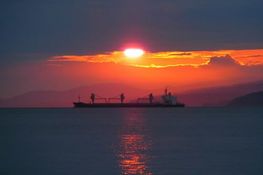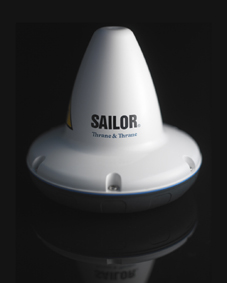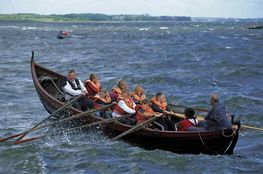
Time to reap the fruits…
The Sea Stallion and project ‘Full-blood at sea’ are the culmination of decades of research and documentation. But stormy clouds loom ahead.
Sunday July 1th 1957 Ole Crumlin-Pedersen and Olaf Olsen commenced an archaeological excavation on the bottom of Roskilde Fjord. What everyone back then thought to be remnants of a late medieval ship soon turned out to be the sensational discovery of the wrecks of five Viking Ships.
Five worn-out ships sunk in the Viking Age on the bottom of Roskilde Fjord; sunk on purpose to block one of the sailing passages into Roskilde and Lejre.
Sunday July 1th 2007 – on the exact date 50 years later – the Sea Stallion from Glendalough sets sail for Dublin.
The Sea Stallion is the world’s largest reconstruction of a Viking ship – a full scale reconstruction of one of the five ships excavated half a century ago.
Denmark in the top spot
In between these two historic events we find decades of arduous research and documentation; a scientific achievement which has marked the Viking Ship Museum and Denmark as front runners in the field of maritime archaeology.
“It is simply incredibly pleasing that we are now able to reap the fruits of labour of the people, who for decades have worked on this. And even though we are almost ready to send the Sea Stallion to the North Sea and the Atlantic, our researchers have the new finds of Viking Age ships to document,” says Tinna Damgård-Sørensen, director of the Viking Ship Museum.
These “new” wrecks saw daylight 10 years ago, during the construction of the museum island, where the boat yard is today.
No reconstruction
“Right now, Ivan Conrad Hansen from our department of documentation is measuring Roskilde 6; the biggest Viking ship ever found anywhere in the world. It is 36 metres long – 6 metres longer than the Sea Stallion,” Tinna Damgård-Sørensen says.
But she doubts the Roskilde 6-wreck will ever be reconstructed – the way the Skuldelev 2-wreck was… as the ship we know today as the Sea Stallion of Glendalough.
“No, most probable we will never build a reconstruction of Roskilde 6. The truth is that the many cut-backs of recent years will force maritime archaeology in Denmark to diminish. Public funding of scientific research in maritime archaeology is decreasing, so I reckon that in the Sea Stallion we see the culmination of accomplishments, in which Denmark was leading so splendidly.


